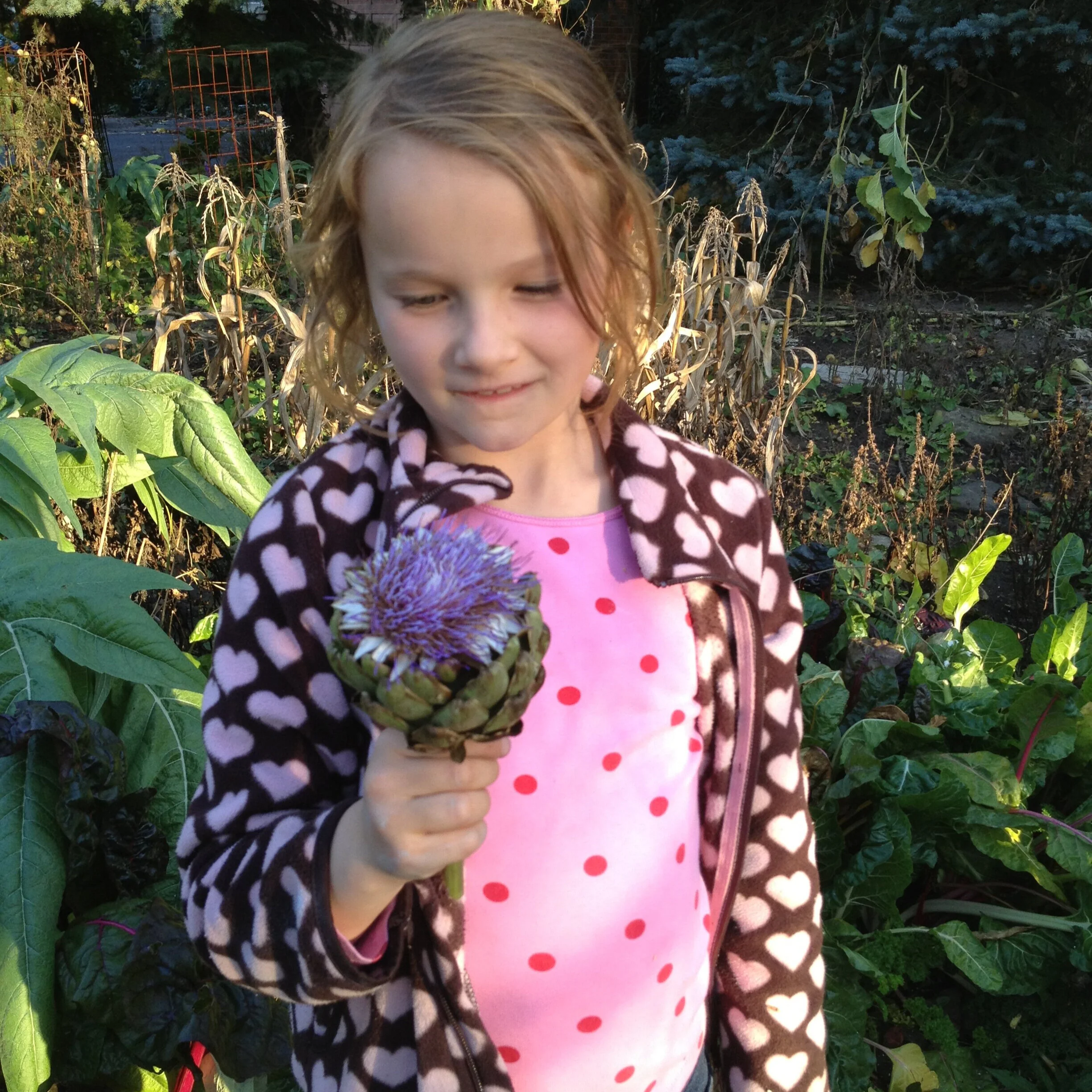Toronto chef and author Jennifer McLagan talks about how to cook bitter foods such as cardoon plants. Photo by Shane Reid.
Chef and author Jennifer McLagan joins us to talk about bitter foods, explaining what bitterness is, and how to effectively use bitter in the kitchen.
McLagan is the author of the book, Bitter: A Taste of the World’s most Dangerous Flavor, with Recipes.
The Loss of Bitter
McLagan recalls the grapefruit that her mother served her as a child. They had a slight bitterness—an “edge.” Her mother balanced that bitterness with a sprinkle of sugar on top.
McLagan says bitterness has been bred out of modern grapefruit. Now they’re sweet and pink…with no bitterness.
That loss inspired her book. “They don’t taste like grapefruit any more,” she says.
What is Bitter?
McLagan says that many people confuse bitter with sour. It is different from sour—one of the four basic tastes, along with sour, sweet, and salty.
“It adds a complexity and depth to the food,” says McLagan, explaining that using bitterness—like salt—makes food more interesting and less flat.
Cardoon plants are one of the bitter foods in Jennifer McLagan’s book, Bitter
She gives the example of crème brulée: The caramel topping has a bitter edge, which plays well with the sweet, rich pudding below.
Cooking with Bitter Foods
McLagan says that bitter is not as popular in North American cuisine as it is in other parts of the world. “The American palate is very geared towards sweet,” she explains.
Bitter pairs well with fat and with sweetness. “Bitter and fat are the two perfect things; one rounds out the other,” she says.
Here are ideas for using bitter in the kitchen:
McLagan talks about making turnip ice cream. She also suggests caramelizing turnips, which go well with baked apple or apple pie.
McLagan suggests cooking Belgian endive in butter (because fat and bitterness work well together) and then using that juice to make béchamel sauce, with added emmenthal cheese, to serve over top of the Belgian endives.
She has surprises in her book! There is a pannacotta with tobacco. McLagan says that small pieces of cigar give it a complex taste. A pannacotta is rich and creamy, and the bitterness from the tobacco comes through very gently at the back of the throat, making it a much more complex dish.
How to Cook Cardoon
For those who have never seen cardoon, McLagan describes it as “celery on steroids.” It has big, wide ribs. And it’s in the cover photo of her book.
The part of the plant that is eaten is the leaf rib. The rest of the leaf is discarded.
She describes it as having an artichoke-and-mushroom flavour—one that will seduce you once you appreciate the bitterness.
Here are McLagan’s tips for preparing and cooking cardoon:
Cut the cardoon stalks from the base.
Remove the spikes along the edge of the rib using a knife.
Next, remove the strings from the stalk (it’s like pulling the strings from a celery stalk).
McLagan finds a sharp knife works better than a vegetable peeler because there are a lot of strings and a peeler plugs up.
Once the stalks are prepared and you begin to chop them, you might find additional strings. If so, remove them.
Once chopped, place them immediately into water with lemon juice to prevent them from browning.
Cook in salted water until tender (the salt is important because salt helps pull out bitterness).
Drain.
Remove any remaining strings.
She says a great way to serve cardoon is with a cheese sauce. “When you put cheese on something, people love it,” she says.
MgLagan notes that the inner stalks are milder, with a better texture. They are less stringy, with a delicate silver-green colour and feathery leaves. She advises using stringy outside stalks for soup; and the more tender inside ones for a gratin or salad.
Here are the cardoon recipes she includes in the book:
Cardoon gratin
Cardoon soup
Warm cardoon and potato salad
Cardoon beef tagine
Cardoon cheese
Cardoon and bitter-leaf salad
Cardoon with braised bitter greens,
Connect with Jennifer McLagan
Website: jennifermclagan.com
My daughter Emma with a cardoon flower. The plants have great ornamental value too.
Bitter in the Garden
One of the challenges—and delights—of growing new food crops in the garden is figuring out how to use them in the kitchen. Looking to add bitter to your garden? Here are ideas:
Arugula
Belgian endive
Cardoon
Citrus rind
Olives
Radicchio
Turnip



